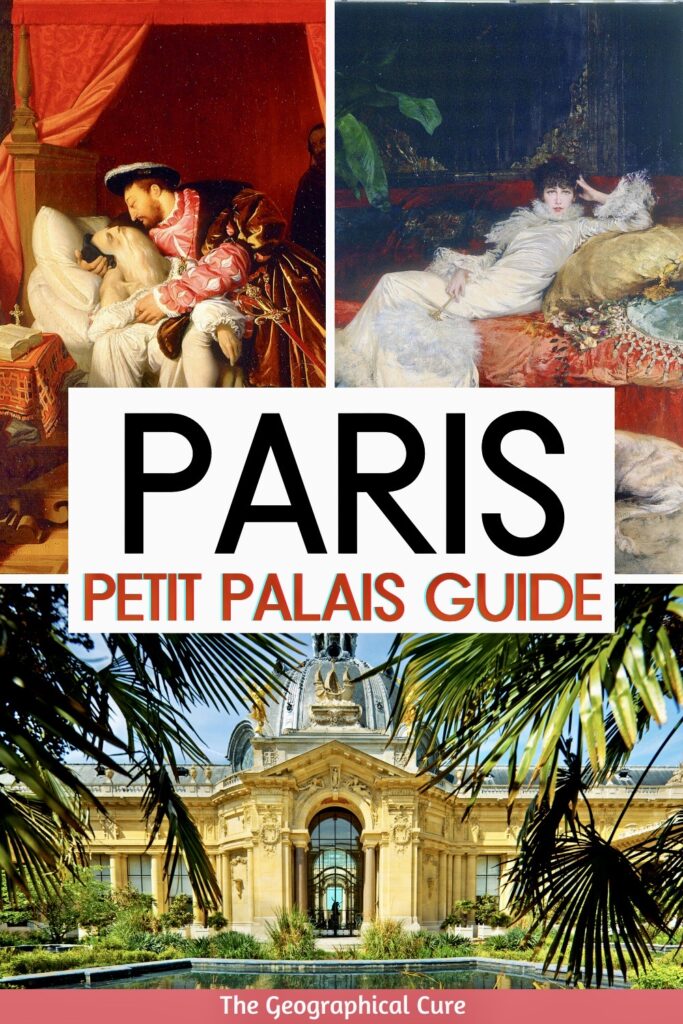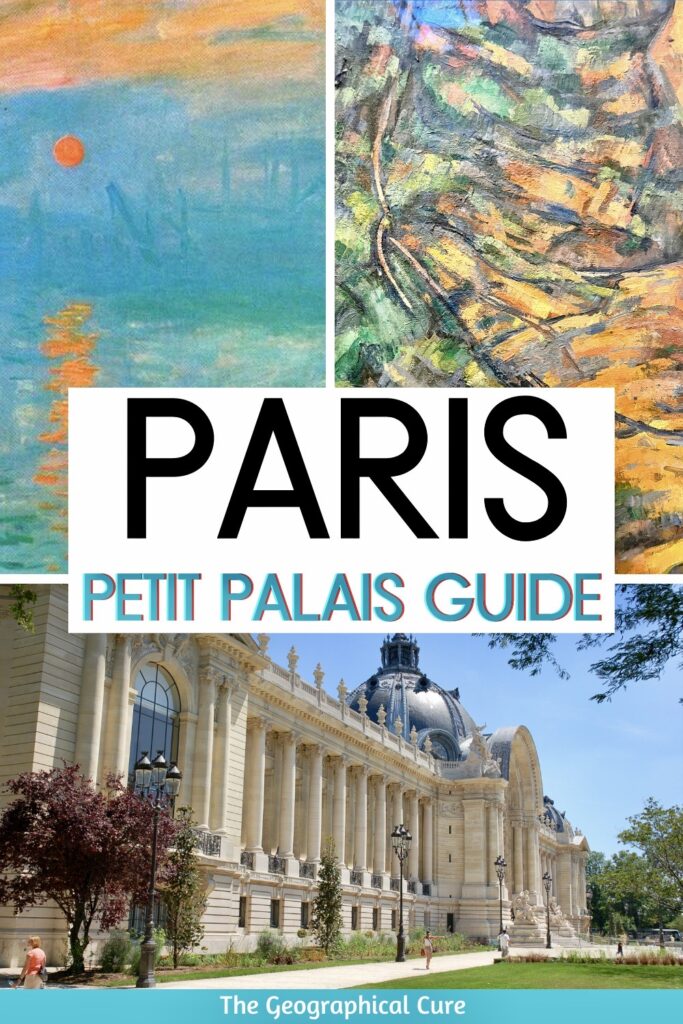Fully renovated and an architectural stunner, the Petit Palais is one of the best small museums in Paris.
Like its sister palace, the Grand Palais, the Neo-Classical Petit Palais was built for Paris’ 1900 Universal Exposition. It was designed in the glamorous Beaux Arts style by the famous Parisian architect Charles Girault.
The sumptuous interior is filled with sculpted stucco work, frescoed ceilings, mosaic floors, and wrought-iron railings and staircases. It’s a beautiful building in a city full of stunning monuments. You’ll get a peek at the lavish lifestyles of Parisians in centuries past.
The temple became a museum in 1902. It’s an utterly charming museum that’s rarely crowded and easy to cover in an hour or two
Plus, the under-appreciated permanent collection is free and a joy to take in. When you’re done viewing the art, you can stroll under the mosaicked garden portico or sip coffee at the cafe.
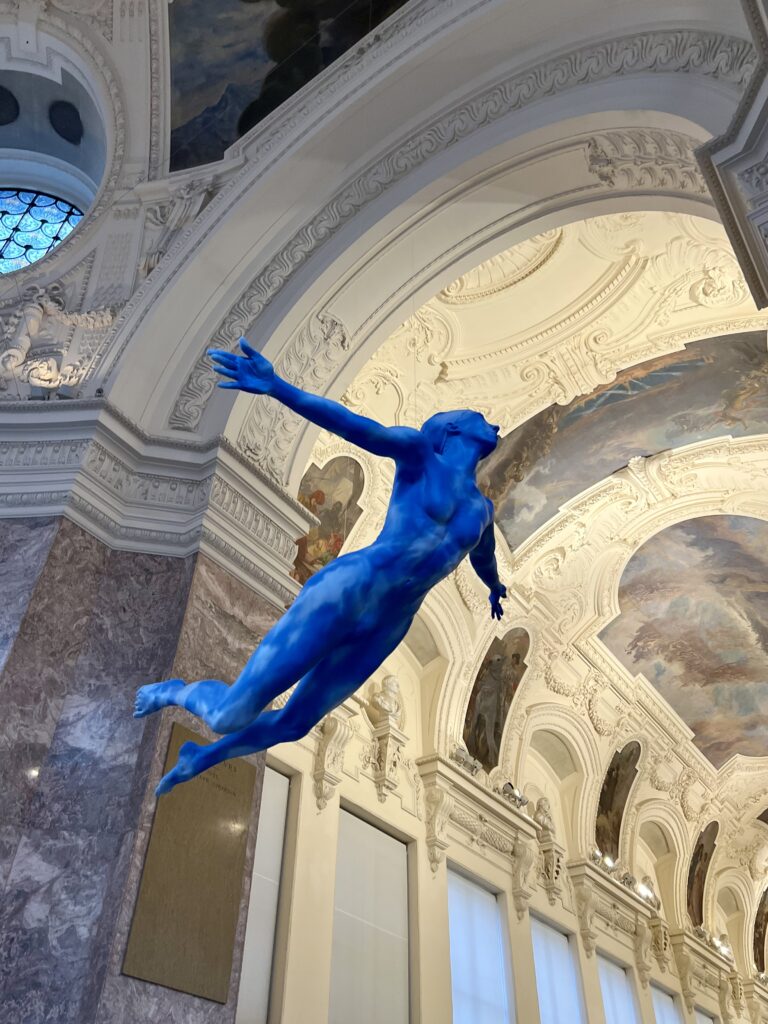
The Petit Palais houses French paintings, sculpture, and artifacts from antiquity to the early 20th century. The core of its collection is from the 19th century.
The collection includes artists as diverse as Rembrandt, Fragonard, Delacroix, Cézanne, Courbet, Corot, Monet, Rodin, Sisley, Pissarro, and many others.
There’s also a section dedicated to Roman and Greek art and some splashes of Post-Impressionism with Gauguin and Cezanne paintings. The museum also hosts special exhibitions featuring modern art, photography, and fashion.
There’s also a sleek modern cafe, bookstore shop and a basement level auditorium.
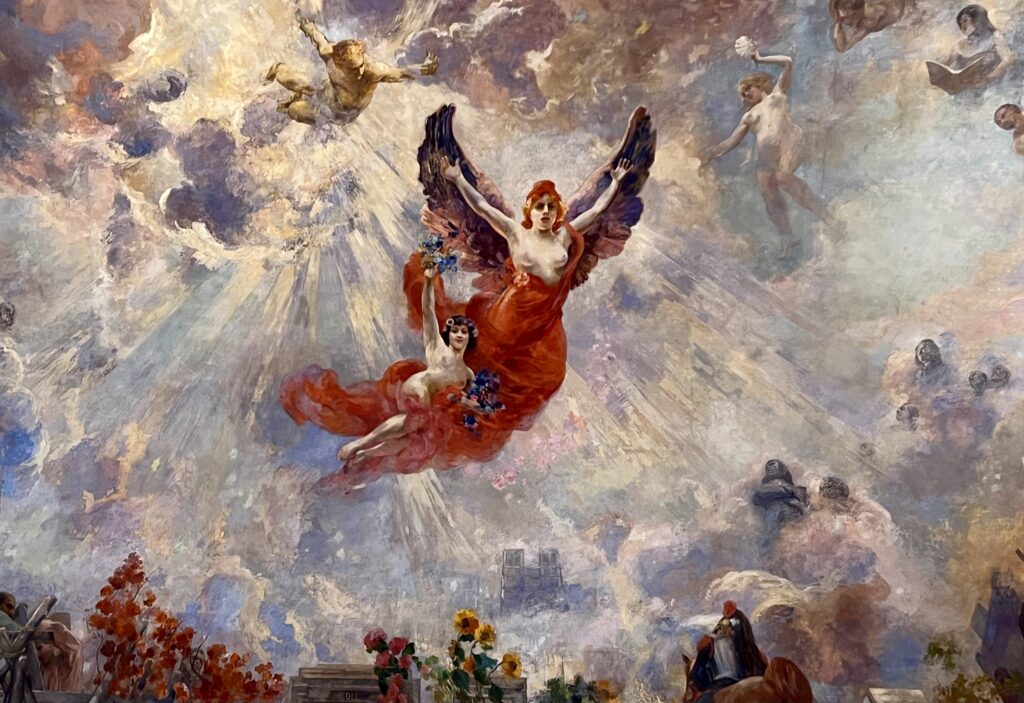
Guide To The Petit Palais: What To See
Here are some of the masterpieces of the Petit Palais that you shouldn’t miss.
1. Lobby & Ceiling Murals
From 1903-1910, Albert Besnard painted four decorative murals on the walls of the two entrance galleries. They are named Matter, Thought, Formal Beauty, and Mysticism.
From 1906 to 1911, the artists Cormon and Roll decorated the ceilings of the galleries, which are 50 feet long.
The first fresco tells the story of the history of Paris from the Battle of Lutetia up to the French Revolution, whereas the second illustrates modern Paris.
Above the main galleries there are sixteen plaster busts set into the walls that represent famous artists such as Eugene Delacroix.
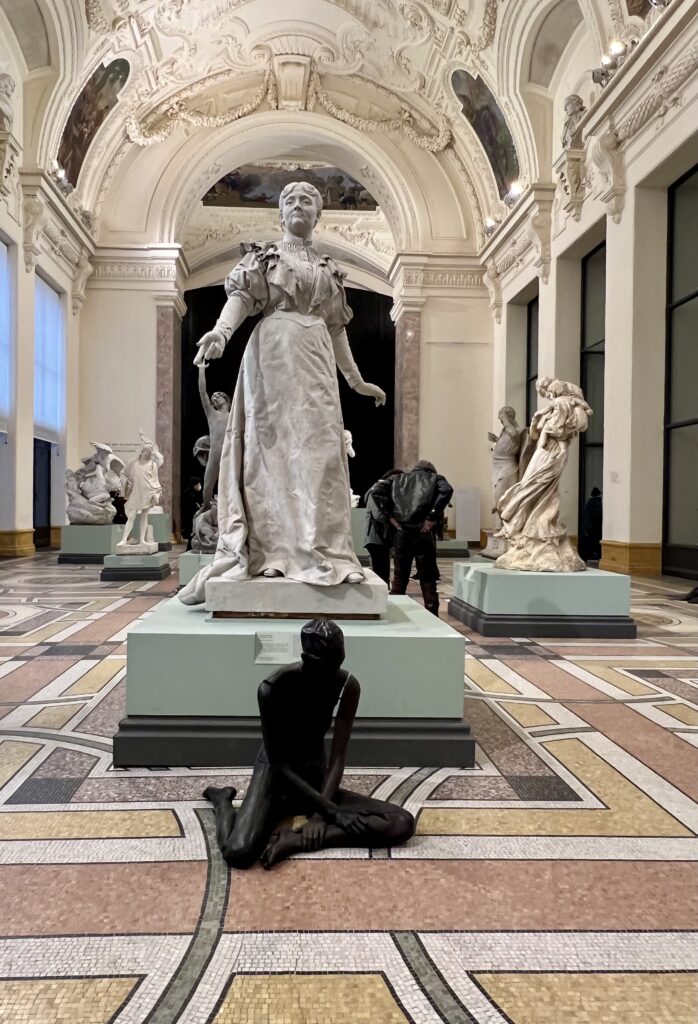
2. Gallery of Statues
The Petit Palais has a wonderful little sculpture gallery to the left as you enter. It’s in the Ceremonial Gallery, which boasts lavish mosaic floors.
In the late 19th century sculpture was everywhere in Paris — on streets, facades, gardens, and squares. It was the equivalent of “statuemania.”
Making plaster casts was a first step in the creation process. The casts were preserved by the city department in charge of municipal religious and civil art works.
Those plaster cuts are gathered in the Petit Palais. Aside from their aesthetic beauty, they are all that remain of works that were melted down in WWII.
The statues vary in style, era, and subject, ranging from a woman in Victorian dress to Greek wrestlers.
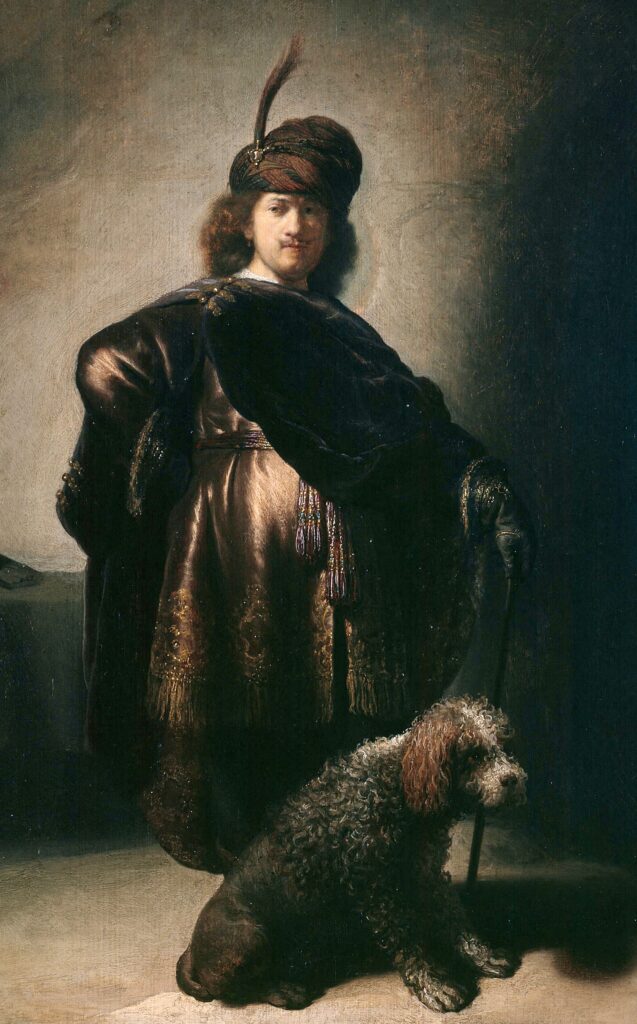
3. Rembrandt, Self-Portrait in Oriental Costume
Rembrandt was one of premiere painters of the Dutch Baroque period, called the “Dutch Golden Age.” And he was the master of the self-portrait.
This painting in the 17th century gallery is unique because it’s the only self-portrait where Rembrandt is standing up.
But Rembrandt wasn’t happy with his depiction. X-rays show us that Rembrandt shortened his legs and then later hid them behind a dog.
Rembrandt was intrigued with the Middle East and frequently used Oriental costumes in biblical scenes or to create an image that evoked exotic lands.
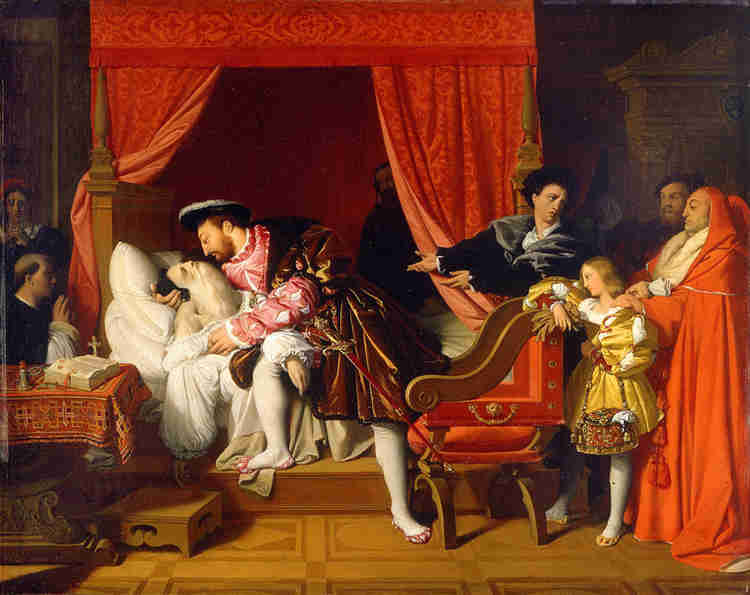
4. Ingres, Death of Leonardo
Ingres was one of the great members of the Neo-Classical school and French Academy. He also spent time in Italy.
There, he painted the death of Leonardo da Vince, the greatest artist of the Renaissance. Leonardo had moved from Milan to the Loire Valley in France to join the court of Francois I, where he painted and designed theatrical stage sets.
Leonardo didn’t die in the presence of the king as Ingres romantically depicted. That fictitious story comes from a book called The Lives by Florentine artist Giorgio Vasari.
Nonetheless, the painting celebrates the excellence of Italian painting.The face of Francis I is from a Titian portrait painted in 1538. In contrast, the dying Leonardo is classic Ingres with the usual physical contortions.
5. Georges Clairin, Portrait of Sarah Bernhardt
At the Paris Salon of 1876, this singularly beautiful portrait drew rave reviews. It’s a portrait of the popular Belle Epoque actress Sarah Bernhardt. It might be my personal favorite painting in the Petit Palais.
Bernhardt had just moved into a hotel particulier in Parc Monceau with a bohemian interior. In her lush silk robes, she has an air of nonchalance.
It was one of Bernhardt’s favorite portraits and she kept it all her life. It has the sinuous lines and iridescent colors characteristic of the Art Nouveau fashion of the time.
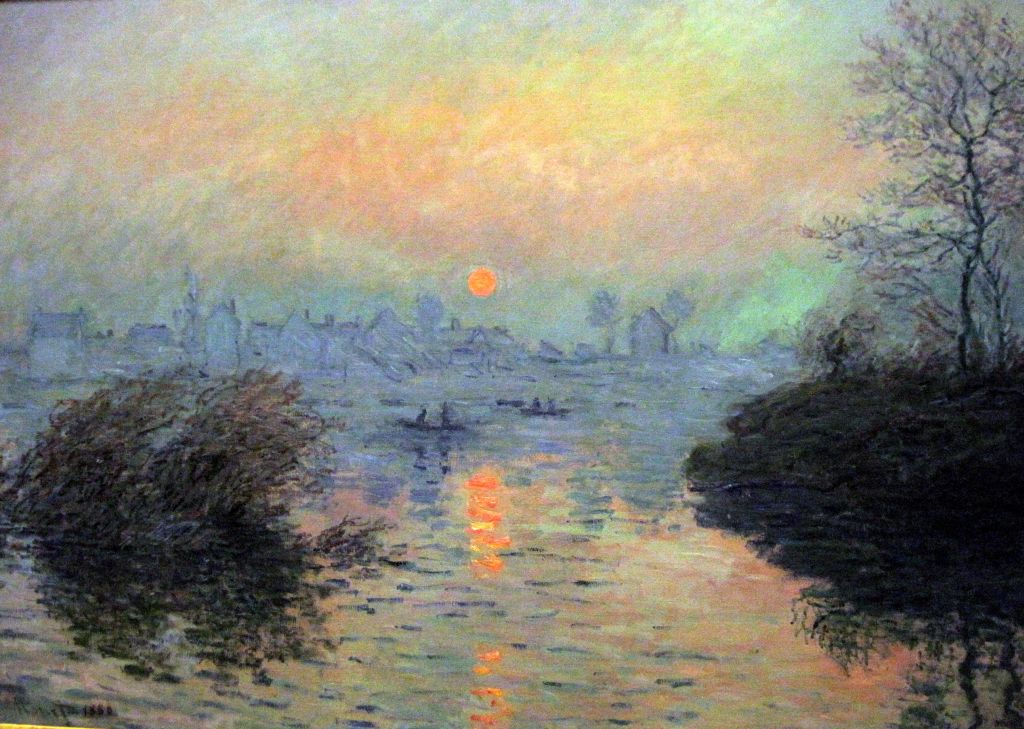
6. Monet, Sunset on the Seine at Lavacourt, Winter Effect
This is an early Monet, the father and founder of Impressionism. It’s one of 20 works he painted at Lavancourt in 1880. It was rejected by the official salon as too impressionistic.
It’s a flooded landscape showing ice melting on the Seine River. The cold mist is conveyed with fine, fluid brush strokes.
The orange sun in the center is reminiscent of his famous painting Impression, Sunrise, a painting which gave rise to the title Impressionists. That painting is at another lovely small museum, the Musée Marmottan Monet.
Near this painting are Impressionist works by Mary Cassatt, Alfred Sisley, and others.
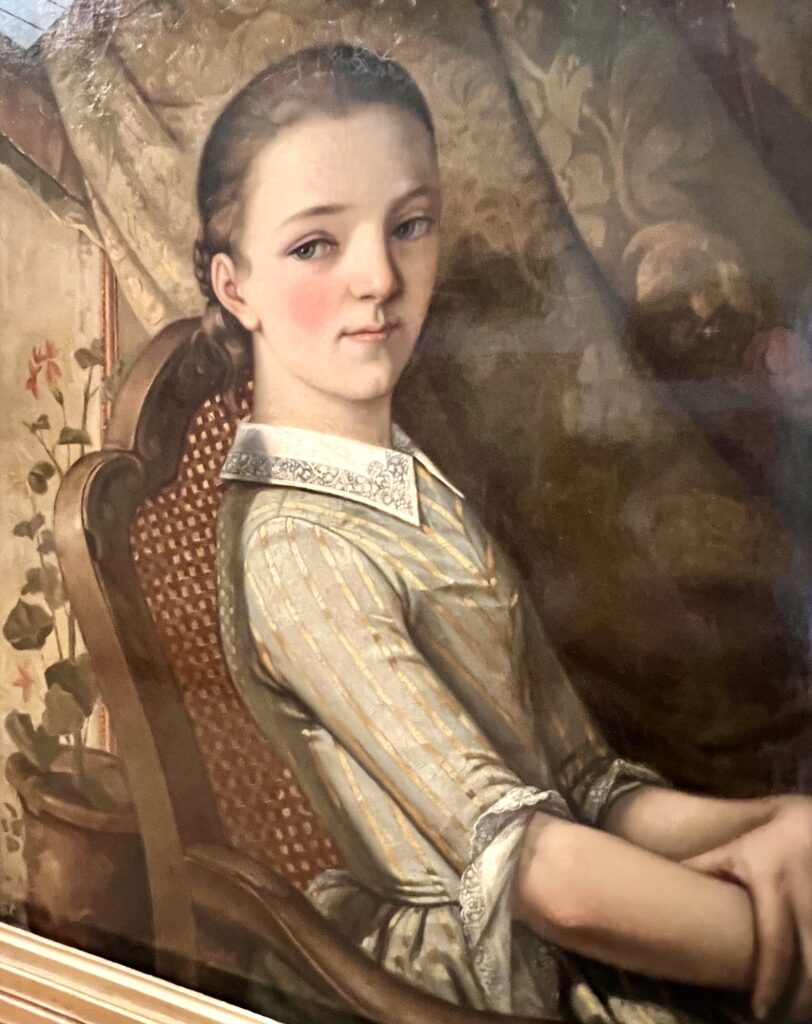
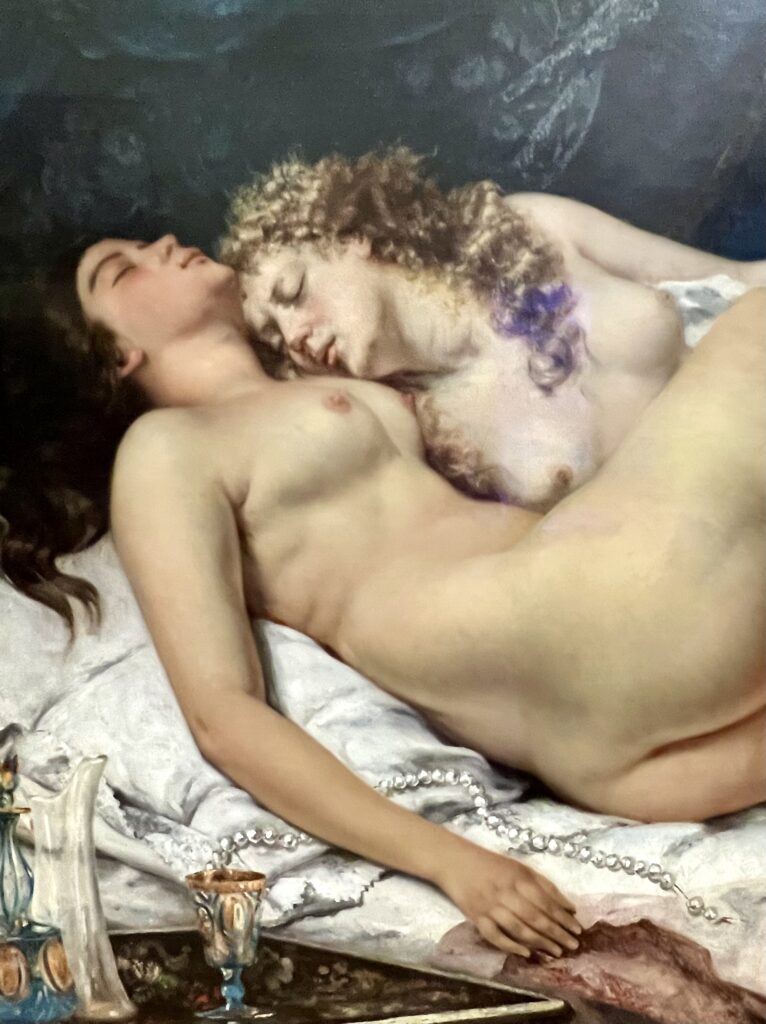
7. Courbet Paintings
If you are a fan of Gustave Courbet, you are in for a treat. The Petit Palais has one of the world’s largest collections of Courbet paintings (11) thanks to purchases made by the City of Paris and the donations of Juliette Courbet (his sister) and art critic Théodore Duret.
Courbet was central to the emergence of Realism in the mid-19th century. The artist art insisted on the intrinsic physical reality of the objects he observed, even if that reality was plain or less than pleasing.
The most shockingly realistic one at the museum is The Sleepers, a bit of soft porn. It was a private commission, so Courbet didn’t have to meet the strictures or censures of staid academic painting.
You’ll see two nudes with lifelike flesh sleeping in a boudoir. (The most racy of Courbet’s works of this nature, for the same patron, is at the Musee d’Orsay.)
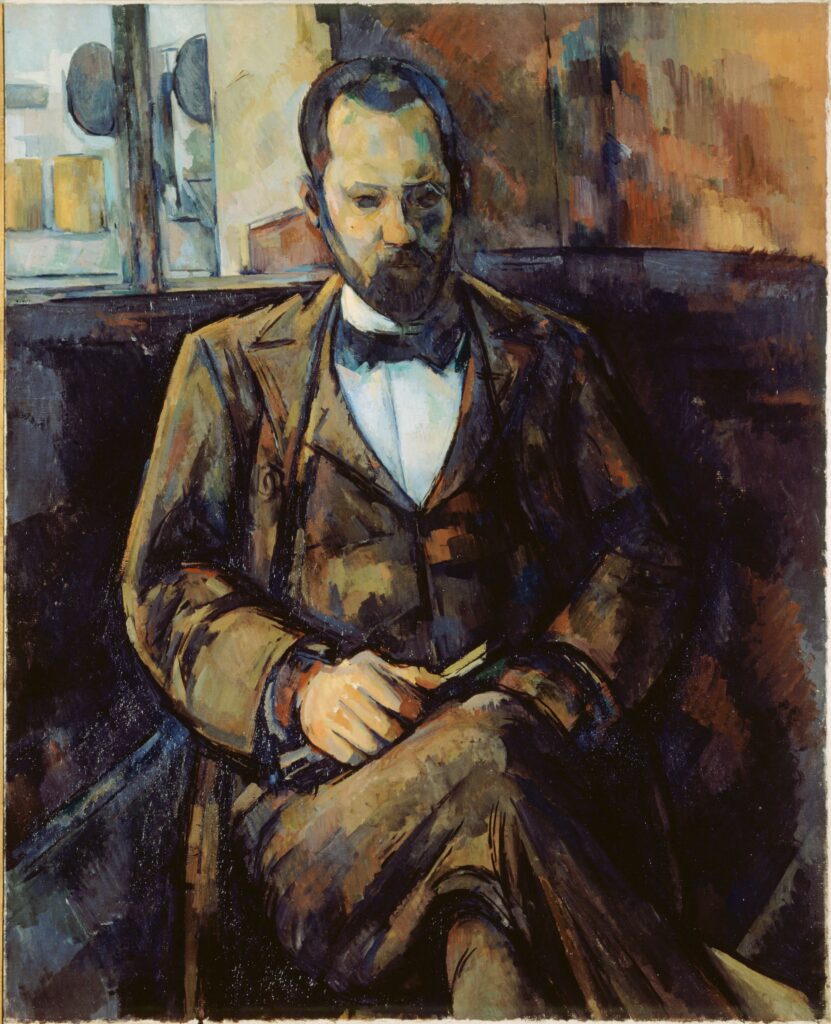
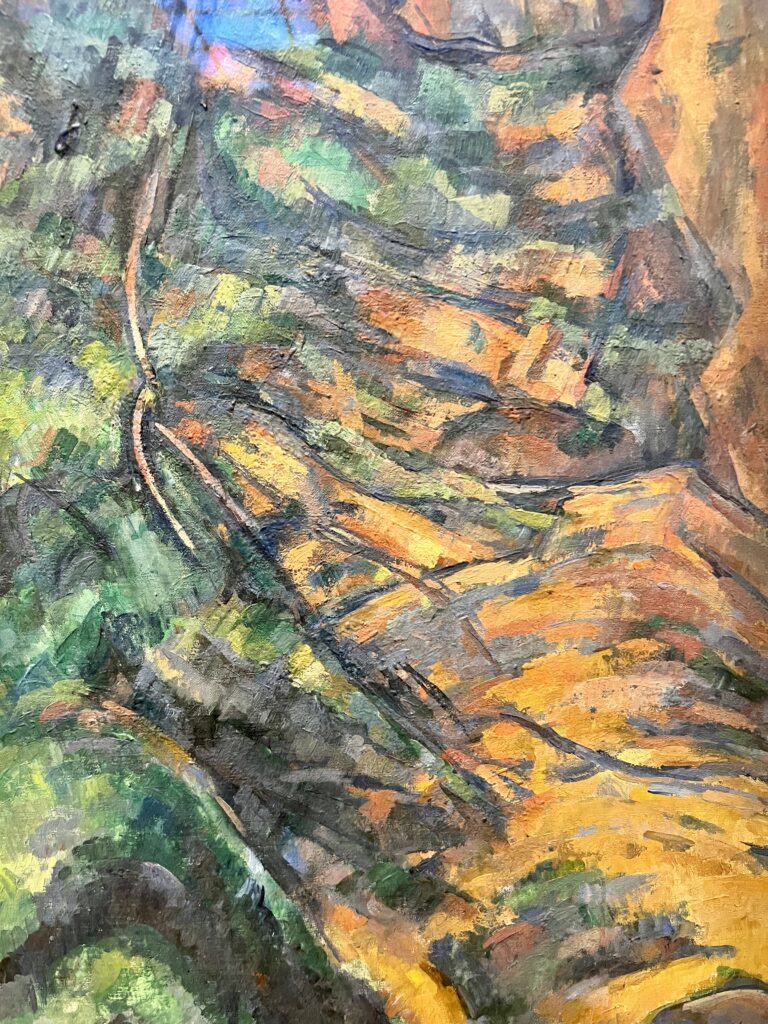
8. Cezanne Paintings
Post-Impressionist Paul Cezanne was one of the most influential artists in modern painting. Both Matisse and Picasso remarked that Cezanne “is the father of us all.”
The Petit Palais has several Cezanne paintings, including a landscape, a bathers painting, and some portraits.
My favorite piece is Portrait of Ambroise Vollard, who generously donated the painting to the museum. Portraits were Cezanne’s first love and a laboratory for developing his voice as an artist.
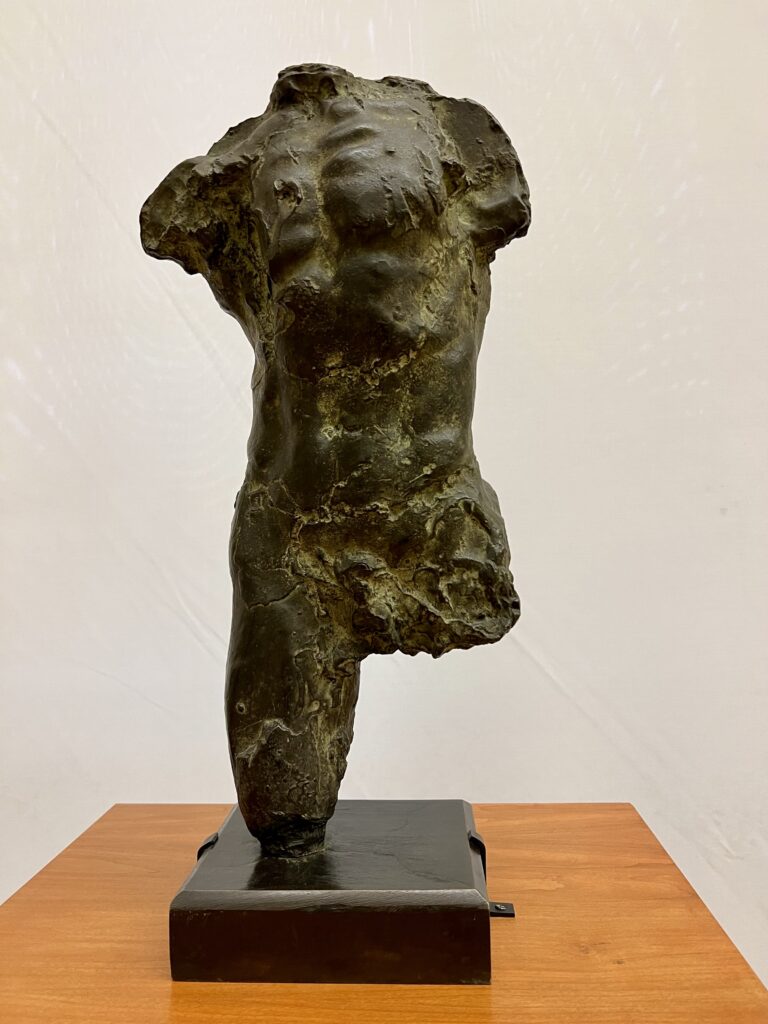
9. Rodin, Auguste Rodin, Torse d’homme
Rodin is considered the father of modern sculpture. He was absurdly talented, his works a torrent of expressive power.
This sculpture was an abandoned study for the large plaster Saint John the Baptist. It had been squirreled away and hidden. When Rodin found it, he thought it was an archaeological marvel and had it cast in bronze.
The greenish patina is comparable to something you might find at an archaeological dig. The sculpture reveals a mature Rodin, fascinated with the effect of the passing of time on his sculptures.
It later influenced the creation of one of Rodin’s most famous sculptures, The Walking Man.
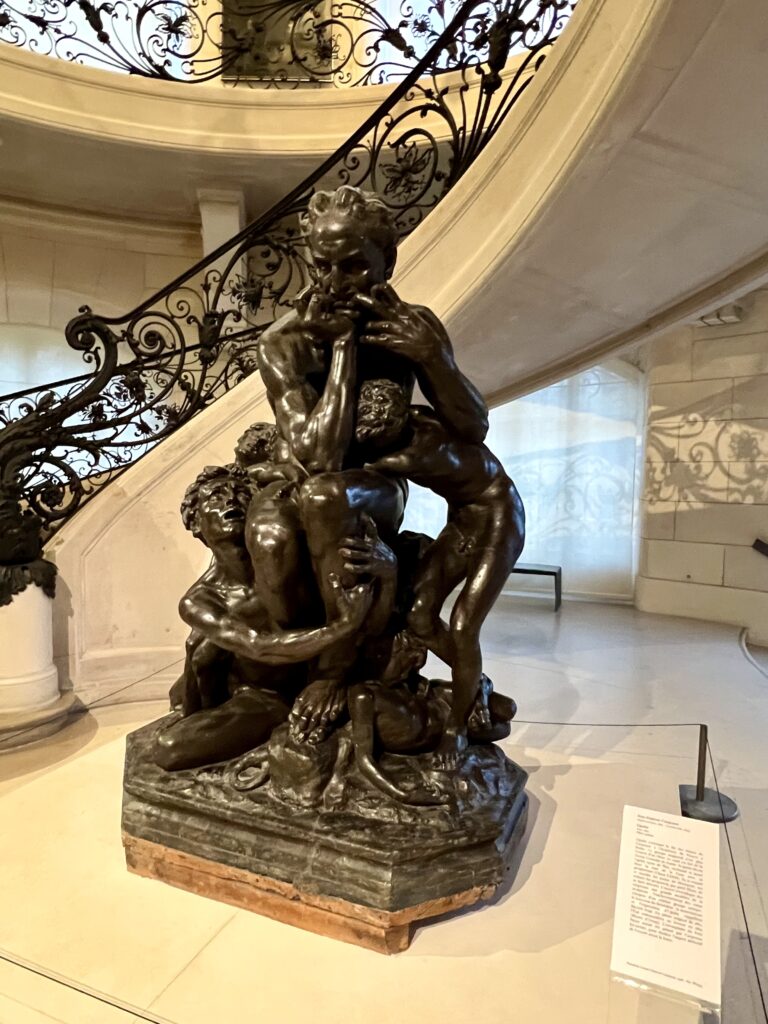
10. Carpeaux, Ugolino and His Sons
Carpeaux was a sculptor who one of the last court artists of the Second Empire of Napoleon III. He’s most famous for The Dance, a large and exuberant sculptural group once on the facade of the Opera Garnier and now housed in the Musee d’Orsay.
His work was influenced by alternating currents of Romanticism and Realism, not to mention a passion for Michelangelo and Rodin.
Ugolino and His Sons was his first major sculpture. It’s a five figure scene depicting Dante’s Ugolino character from the Inferno.
He was a tyrant whose eternal punishment was to be imprisoned with his four sons and face the agony of either starvation or cannibalism. Just look at the contorted, finger-gnawing mouth and the clenched toes.
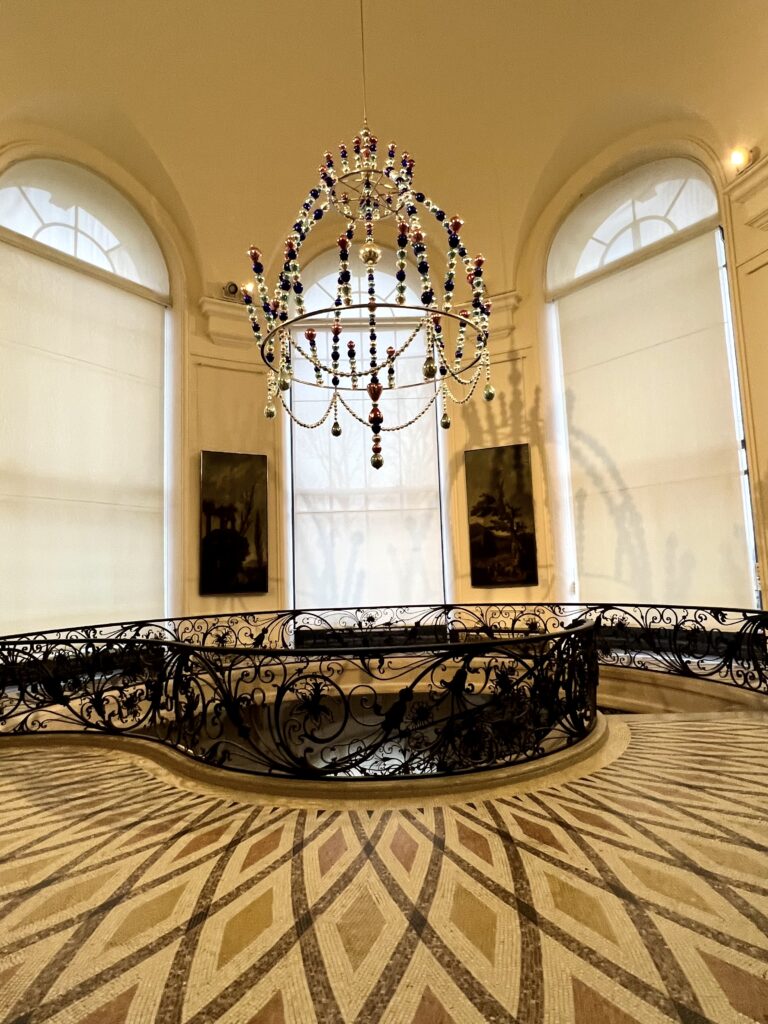
11. Othoniel, The Crown of the Night
This is a lovely hanging sculpture in the dome of the main staircase. Designed by the architect Girault, the staircase is lovely and considered one of the best works of wrought iron in France.
The Crown was donated to the museum by the artist, Jean-Michel Othoniel, after his 2021 exhibition at the museum. Previously, it had been installed in a forest in the Netherlands.
Othoniel says his role as an artist is to bring “wonder and enchantment” and that is the aesthetic of this beautiful piece.
12. Gardens & Courtyard
The museum gardens have unmistakable charm. There is a round peristyle with pink granite columns and frescos by Paul Baudoüin.
Allegorical sculpted figures sit on the rooftops and there are three pools covered in blue and gold mosaics. Tropical plants abound.
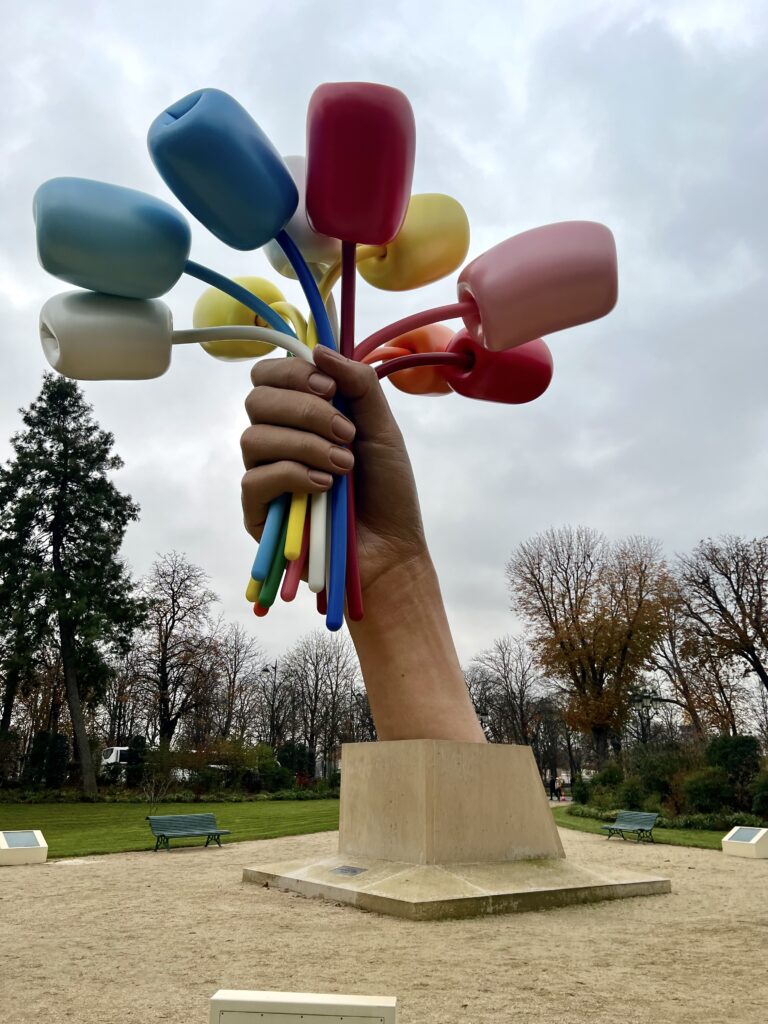
13. Jeff Koons, Bouquet of Tulips
Bouquet of Tulips is a monumental sculpture by Jeff Koons in the gardens behind the Petit Palais. Koons is a contemporary pop artist known for his metallic sculptures of balloon animals or humans.
Koons donated the concept and design of the sculpture. A private foundation raised funds to produce and install it in 2019.
You’ll see a 40 foot high hand holding a fistful of flowers. It’s dedicated to the victims of the terrorist attacks in Paris in November 2105. Koons said he was inspired by the Statue of Liberty.
Many Parisians, however, consider the sculpture a rather divisive and symbolically inappropriate memorial. It’s been criticized as kitschy or pornographic (resembling indelicate pieces of male anatomy). Others say the tulips look like corn dogs or marshmallows.
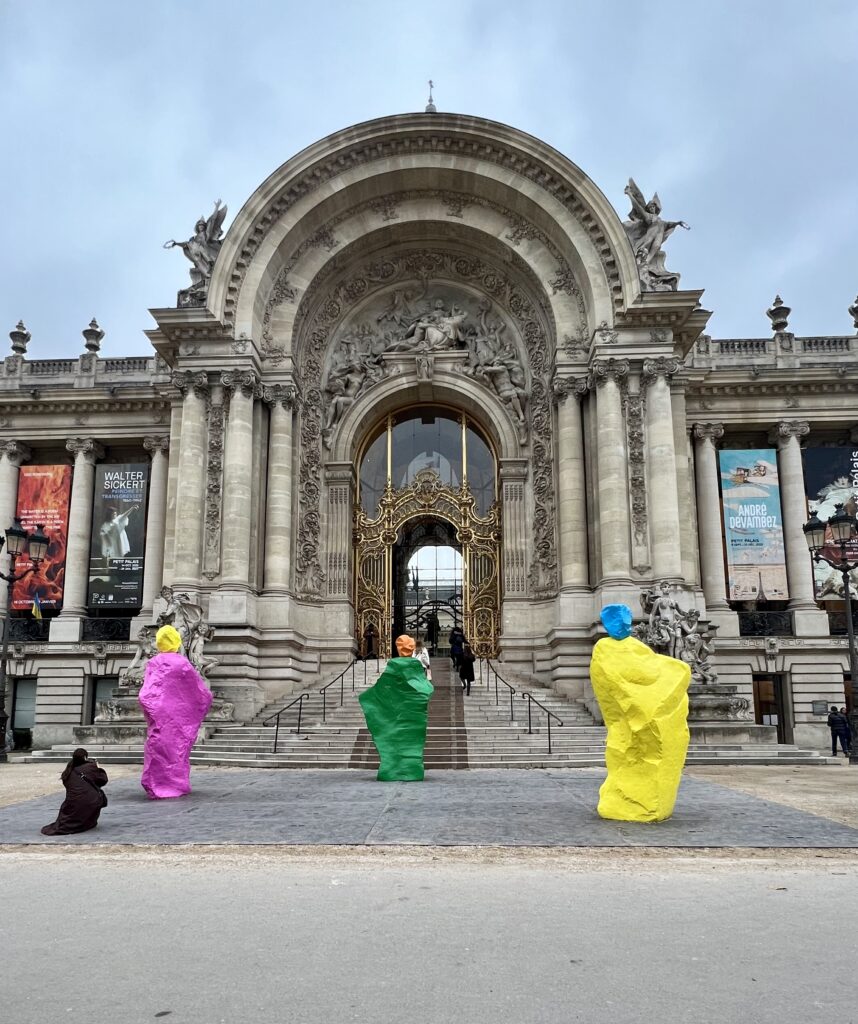
Guide To The Petit Palais: Practical Information
- Address: Avenue Winston Churchill, 8th arrondissement
- Entry fee: permanent collection is free
- Hours: Open Tues-Sun, 10:00 am to 6:00 pm. Closed Mondays and bank holidays.
- Metro: Champs-Elysées Clémenceau
- Website
Pro Tips For Visiting The Petite Palais:
One good thing about the Petit Palais is its central location. It’s close to many other Paris attractions. You can combine it to a visit with another underrated museums, the Musee Jacquemart-Andre.
It’s also just steps from the Champs-Élysées. 15 minutes down that famous street is the Arc de Triomphe, which offers fabulous view of both the Champs-Élysées and the Eiffel Tower. (You must pre-book a ticket to climb to the top.)
If you’d rather take a break, stroll through the Tuileries Gardens. Or keep strolling westward down the Seine until you get to the Palais de Tokyo.
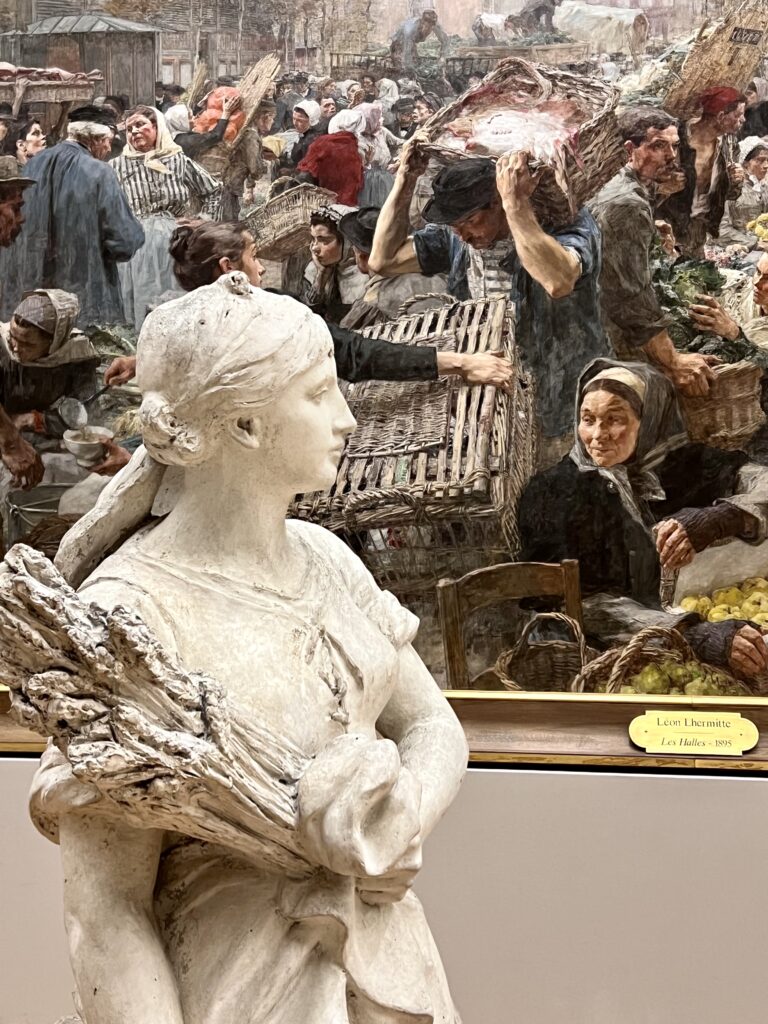
From there, you’ll have more splendid views. And you can visit another free museum, the Musee de d’Art Modern de la Ville.
The Petit Palais isn’t usually crowded. But last time I visited in December, the temporary exhibition was sold out and the permanent collection was more crowded than I remember.
So, if you’re visiting in December (a popular time to visit Paris) or in the summer, you may encounter some crowds. And be sure to pre-book exhibition tickets.
You could whiz through the museum in an hour, if you are rushed. 2 hours is a better amount of time to invest.
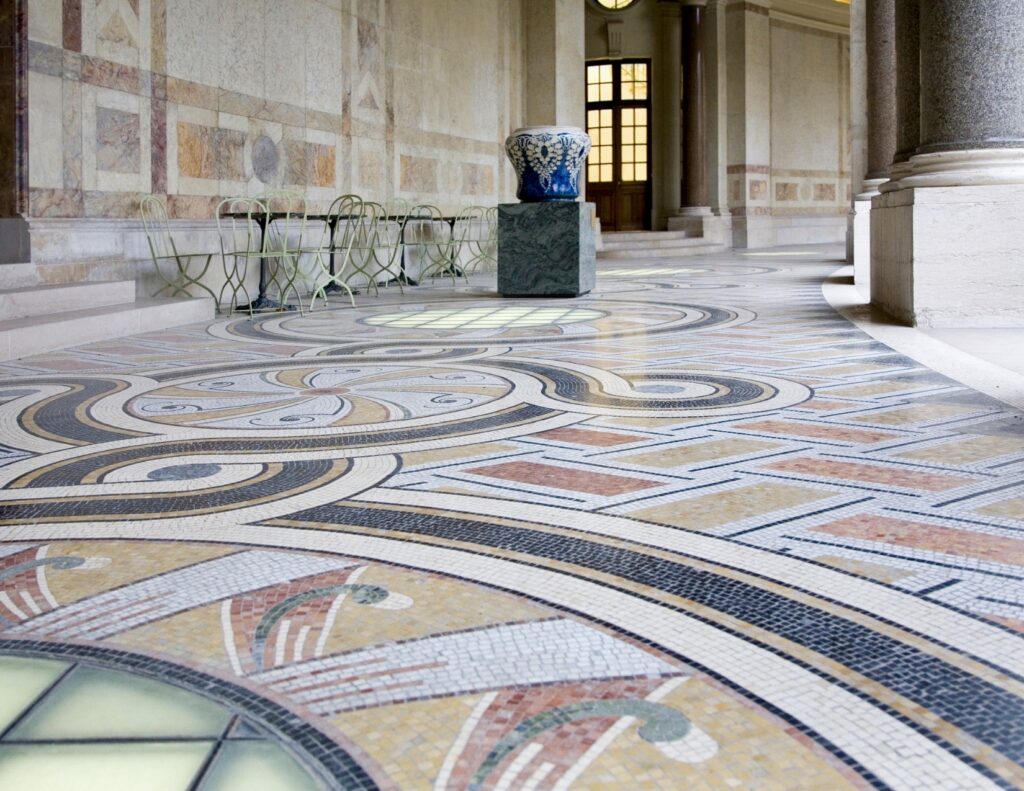
I would try to grab lunch or a coffee at the gorgeous cafe. In nice weather, you can eat al fresco in the garden.
Most of the signage at the museum is in French, with only titles in English.
Thus, you may want to download the museum’s mobile app. There are three suggested tours: 12 masterpieces, 30 must-sees, or a self-guided tour of the collections. Audio guides are 5 euros.
Is The Petit Palais Worth Visiting?
100 % yes. It’s worth a visit just to see the airy grand spaces of the main floor and the gardens. The first two galleries have beautiful restored ceiling murals and intricate Italian floor mosaics.
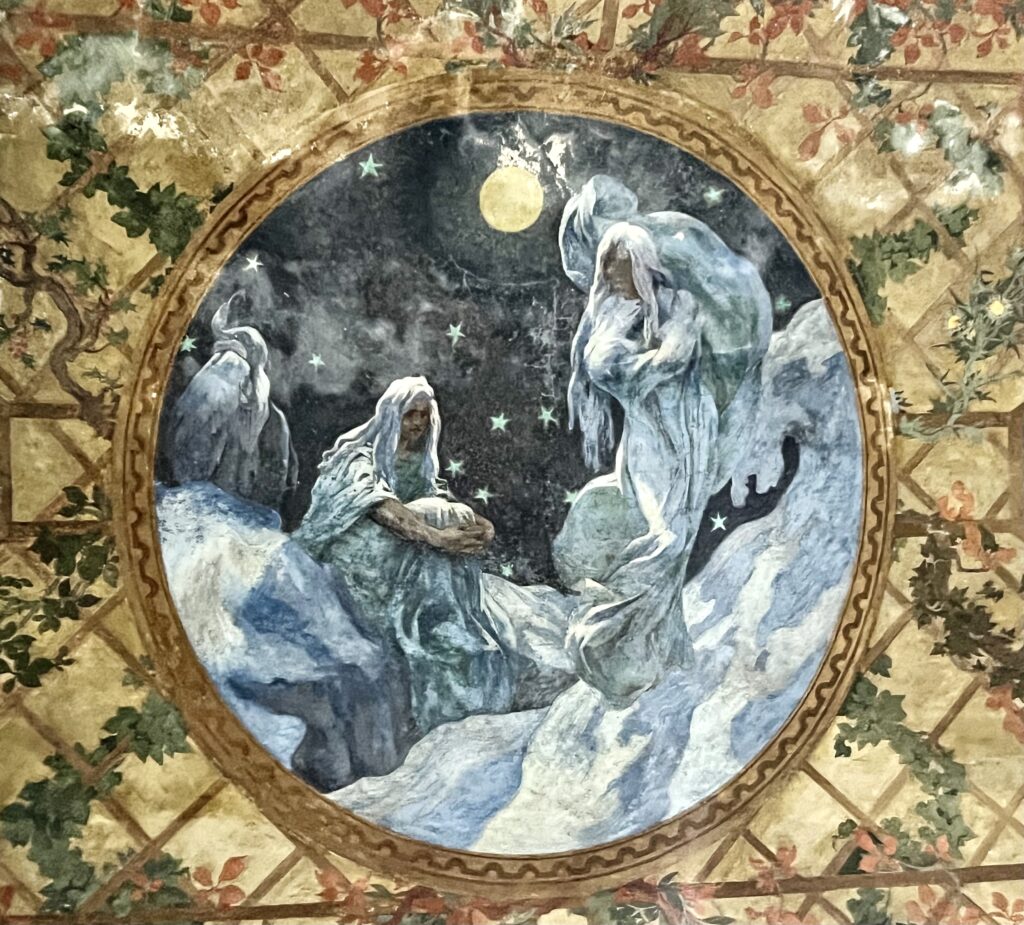
Apart from the setting, the art is exquisite. It’s like a small scale Louvre works from all the preeminent French artists.
There are no outright masterpieces, but a few diamonds. Plus, the temporary exhibitions have really been stepped in recent years and are now hot tickets.
The Petit Palais is a great stop if your Paris Museum Pass has expired, it’s raining outside, or you want to visit a less crowded hidden gem.
Outside the museum you can also note two eye-catching sculptures: French World War I hero Georges Clemenceau facing the Champs-Élysées and a resolute Winston Churchill facing the Seine.
I hope you’ve enjoyed my guide to visiting the Petit Palais. You may enjoy these other Paris travel guides and resources:
- 5 Day Itinerary for Paris
- 3 Day Itinerary for Paris
- 2 Day Itinerary for Paris
- Tips for Planning a Trip to Paris
- Tourist Traps To Avoid In Paris
- Top Attractions in Montmartre
- Top Attractions in the Marais
- Best Museums In Paris
- Hidden Gems in Paris
- Best Churches in Paris
- Best Things To Do in Paris in Winter
- Guide to the Opera District
- Secret day trips from Paris
If you need a guide to the Petit Palais, pin it for later.
